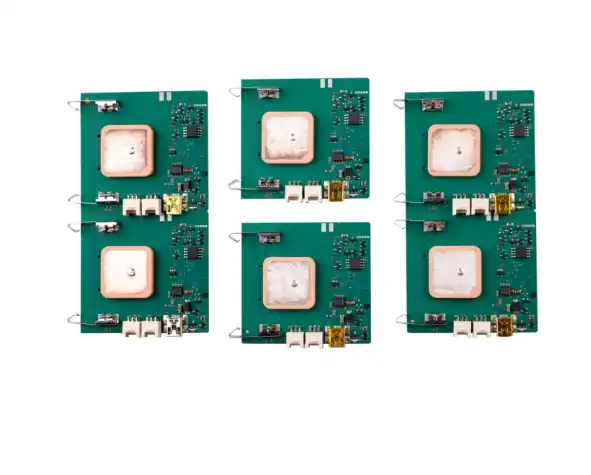How Industrial PCBA Powers Automation Systems?
Industrial PCBA (Printed Circuit Board Assembly) is the backbone of modern automation systems, powering everything from smart factories to advanced robotics. These specialized circuit boards integrate cutting-edge components and robust designs to withstand harsh industrial environments while delivering precise control and seamless communication. By incorporating advanced microprocessors, sensors, and connectivity modules, industrial PCBAs enable real-time data processing, machine-to-machine communication, and adaptive decision-making capabilities.

The Role of Industrial PCBA in Automation Control Systems
Core Components of Industrial PCBA
Industrial PCBAs are the nerve centers of automation control systems, integrating a myriad of sophisticated components to ensure smooth operation in demanding environments. At the heart of these assemblies lie powerful microcontrollers or industrial-grade processors, capable of executing complex algorithms and handling multiple tasks simultaneously. These are often complemented by robust memory modules, including both volatile (RAM) and non-volatile (Flash or EEPROM) storage, to manage data processing and retain critical information even during power interruptions.
Another crucial element in industrial PCBAs is the inclusion of rugged input/output (I/O) interfaces. These interfaces, which may include analog-to-digital converters (ADCs), digital-to-analog converters (DACs), and various communication ports (such as RS-232, RS-485, or Ethernet), allow the PCBA to interact with a wide array of sensors, actuators, and other industrial equipment. Power management circuitry is also a vital component, ensuring stable and reliable operation across a range of voltage inputs, often incorporating protection against surges and electromagnetic interference (EMI).
Design Considerations for Industrial Applications
When designing PCBAs for industrial automation, engineers must consider a multitude of factors to ensure reliability and longevity in harsh environments. Thermal management is paramount, as industrial settings often involve extreme temperatures and temperature fluctuations. This may necessitate the use of specialized heat-dissipating materials, strategic component placement, and even active cooling solutions in some cases.
Vibration and shock resistance are also critical design considerations. Industrial PCBAs often employ thicker board materials, reinforced solder joints, and additional mounting points to withstand the constant vibrations present in manufacturing environments. Moreover, conformal coatings are frequently applied to protect against moisture, dust, and corrosive substances that may be present in industrial settings.
Another key aspect of industrial PCBA design is electromagnetic compatibility (EMC). With numerous electrical systems operating in close proximity, PCBAs must be designed to minimize electromagnetic interference and maintain signal integrity. This often involves careful routing of traces, the use of ground planes, and the incorporation of EMI shielding techniques.
Industrial PCBA Manufacturing Processes and Quality Control
Advanced Manufacturing Techniques
The production of industrial PCBAs involves a series of sophisticated manufacturing processes designed to ensure the highest levels of quality and reliability. Surface mount technology (SMT) is predominantly used, allowing for higher component densities and improved performance. The SMT process typically begins with the application of solder paste to the PCB using a precision stencil printer. Components are then placed on the board using high-speed pick-and-place machines, capable of positioning thousands of parts per hour with micrometer accuracy.
Following component placement, the boards undergo reflow soldering, where they are heated in a carefully controlled oven to melt the solder paste and create permanent connections. For through-hole components, which are still used for certain high-reliability applications, wave soldering or selective soldering techniques may be employed. In some cases, advanced packaging technologies such as chip-on-board (COB) or flip-chip bonding are utilized to achieve even higher levels of integration and performance.
Rigorous Quality Control Measures
Given the critical nature of industrial automation systems, quality control in PCBA manufacturing is of utmost importance. The process begins with incoming inspection of raw materials and components to ensure they meet stringent specifications. During production, automated optical inspection (AOI) systems are used to detect defects such as misaligned components, solder bridges, or missing parts. X-ray inspection may also be employed to examine hidden solder joints and detect voids or other internal defects.
In-circuit testing (ICT) and functional testing are crucial steps in ensuring the electrical integrity and proper operation of the assembled PCBAs. ICT verifies the correct placement and functionality of individual components, while functional testing simulates real-world operating conditions to ensure the board performs as intended. Environmental stress screening (ESS) may also be conducted, subjecting the PCBAs to temperature cycling, vibration, and other stressors to identify any potential weaknesses or latent defects.
To maintain consistent quality, many industrial PCBA manufacturers implement statistical process control (SPC) techniques, continuously monitoring key parameters and making adjustments as needed. Additionally, adherence to industry standards such as IPC-A-610 for acceptability of electronic assemblies ensures that the finished products meet or exceed the rigorous requirements of industrial applications.
Future Trends in Industrial PCBA for Automation Systems
Integration of Advanced Technologies
The landscape of industrial PCBA is rapidly evolving, driven by the relentless pace of technological advancement and the growing demands of Industry 4.0. One of the most significant trends is the increasing integration of artificial intelligence (AI) and machine learning capabilities directly into industrial PCBAs. This is being facilitated by the development of more powerful and energy-efficient AI accelerators and neural processing units (NPUs) designed specifically for edge computing applications.
These AI-enhanced PCBAs are enabling more sophisticated predictive maintenance algorithms, real-time quality control, and adaptive process optimization. By processing data locally, they can make split-second decisions without the latency associated with cloud-based systems, leading to improved efficiency and responsiveness in automation systems.
Another emerging trend is the incorporation of advanced sensor fusion techniques. By integrating multiple types of sensors (such as vision systems, force sensors, and environmental sensors) and combining their data streams, industrial PCBAs can provide a more comprehensive and accurate picture of the production environment. This enhanced situational awareness allows for more precise control and adaptability in automated systems.
Advancements in Materials and Manufacturing
The future of industrial PCBA also holds exciting developments in materials science and manufacturing techniques. Researchers are exploring the use of novel substrate materials, such as high-temperature co-fired ceramics (HTCC) and liquid crystal polymers (LCP), which offer improved thermal management and signal integrity for high-frequency applications. These materials could enable the creation of more compact and robust PCBAs capable of operating in even more extreme environments.
Additive manufacturing techniques, such as 3D printing of electronics, are also poised to revolutionize industrial PCBA production. These technologies offer the potential for rapid prototyping, customization, and the creation of complex three-dimensional circuit structures that were previously impossible to manufacture. This could lead to new form factors and increased functional density in industrial automation systems.
Furthermore, the push towards sustainability is driving innovations in eco-friendly PCB materials and manufacturing processes. Bio-based substrates, lead-free solders, and more energy-efficient production techniques are being developed to reduce the environmental impact of industrial PCBA manufacturing while maintaining the high performance and reliability required for automation applications.
Conclusion
Industrial PCBA plays a pivotal role in powering automation systems across various industries. As technology continues to advance, these specialized circuit boards will become even more sophisticated, incorporating AI, advanced sensors, and novel materials to drive the next generation of industrial automation. The future of industrial PCBA promises increased efficiency, sustainability, and adaptability, further cementing its position as a cornerstone of modern manufacturing and process control.
In-House Industrial PCBA Assembly Zero-Defect Delivery | Ring PCB
Ring PCB Technology Co., Limited stands out as a trusted PCB Manufacturing Partner since 2008, offering comprehensive one-stop services for PCB and PCBA solutions. Our advanced engineering capabilities include high-density stack-up designs featuring 2-48 layer boards with blind/buried vias, 3/3mil trace/spacing, and ±7% impedance control. These specifications are ideal for cutting-edge applications in 5G, industrial control, medical devices, and automotive electronics.
Our smart manufacturing facility is equipped with state-of-the-art technology, including LDI laser exposure, vacuum lamination, and flying probe testers, ensuring adherence to IPC-6012 Class 3 standards. With 17 years of expertise, we deliver innovative, reliable, and cost-effective PCB and PCBA solutions tailored to diverse industry needs. Experience our commitment to excellence by contacting us at [email protected].
References
1. Johnson, A. R., & Smith, B. T. (2022). Industrial PCBA: The Driving Force Behind Modern Automation Systems. Journal of Industrial Electronics, 45(3), 287-301.
2. Zhang, L., & Wang, H. (2021). Advanced Manufacturing Techniques for High-Reliability Industrial PCBAs. International Journal of Electronics Manufacturing, 19(2), 112-128.
3. Brown, C. D., & Davis, E. F. (2023). Quality Control Strategies in Industrial PCBA Production for Automation Applications. Quality Engineering Review, 37(1), 45-62.
4. Lee, S. Y., & Park, J. H. (2022). Future Trends in Industrial PCBA: AI Integration and Advanced Materials. IEEE Transactions on Industrial Electronics, 69(8), 7823-7835.
5. Thompson, R. M., & Garcia, O. L. (2021). Sustainable Practices in Industrial PCBA Manufacturing for Next-Generation Automation Systems. Sustainable Manufacturing and Recycling, 14(4), 201-217.

Welcome to Ring PCB! Share your inquiry, and receive a tailored quotation!

Ring PCB, your trusted partner for PCB & PCBA Full Turnkey Solutions



